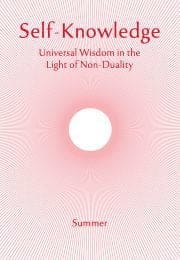Bhagavad Gita Chapter 12: Doing our Best
An important question for seekers of wisdom is whether we should take as the focus of our dedication, the absolute, all-transcending Truth, or a more tangible and conceivable form, such as the source and sustainer of the world, the origin of all power and beauty. The non-dual teachings, and logic, conclude that no finite qualities apply to transcendent Reality. But the difficulties of devoting oneself to That are evident. So the question is a pressing one.
In Chapter 11 of the Bhagavad Gita the pupil experiences a vision of the power behind the cycles of birth and death, the source of all being and becoming. This vision does not come through the mind in the usual way: it is as if he were experiencing the interior of stars, of supernovae, of every atom, of multitudes being born and dying, all simultaneously. He is overwhelmed by this vision of the power behind the universe.
When we philosophise calmly, we infer from creation that such a creative force exists, and in the non-dual philosophy it is given a name to help in our discussions: it is called ‘Ishvara’.
Clearly, in a certain sense, Ishvara ‘arises from’ or ‘exists within’, the ultimate, absolute Reality, called Brahman. And yet, we also understand that Brahman transcends all finite forms and so does not ‘have’ or ‘do’ anything. This means that when trying to discover Reality, we have to remember that the supreme being is the ‘substance’ of which we ourselves are ‘made’, and also entirely exceeds any idea we can form in our mind. And so, as well as deep reflection, we turn to meditation, devotion and the other practices which ultimately draw upon the power of Truth itself behind the mind.
Subscribe or enrol for free guest access to read all of this article and Self-Knowledge online.
Already subscribed or enrolled? Log in:


